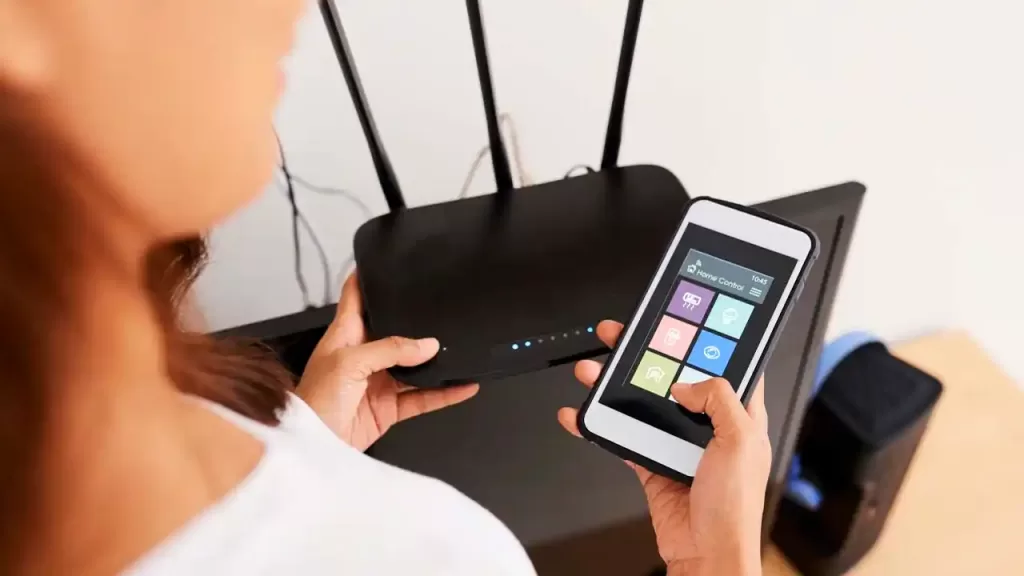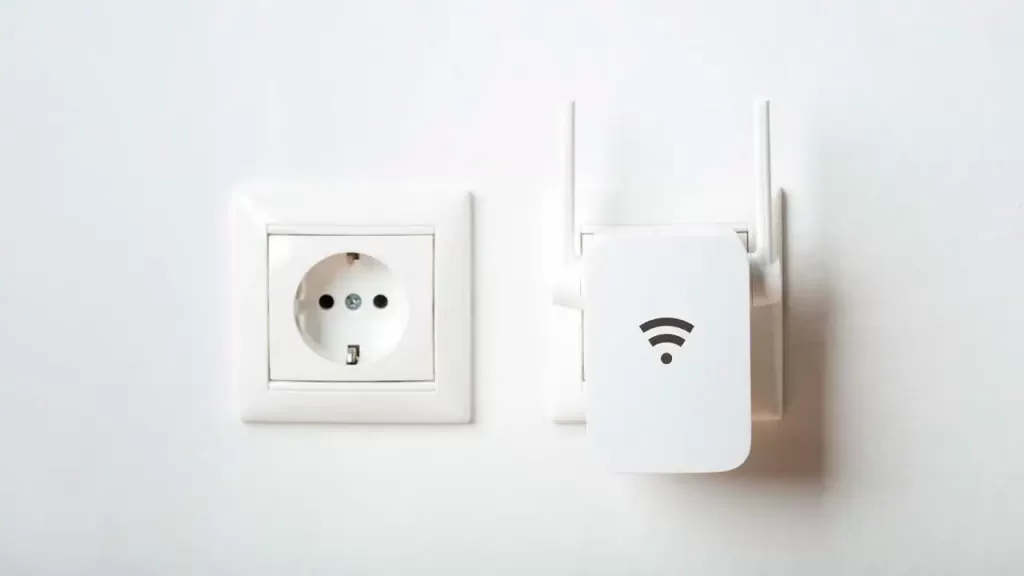Repeater, extender, PLC, or WiFi mesh: which is better?
Table of Contents
Users who wish to improve the WiFi connection of their homes or businesses can implement solutions such as the repeater, extender, PLC, or WiFi mesh
The Internet has become an indispensable resource. But, although virtually all homes have a network connection, not everyone enjoys the same quality. In some homes, the signal weakens substantially when moving away from the router. How to solve these problems? A repeater, extender, PLC, or WiFi mesh can answer this type of problem.
Cell phones, computers, tablets, watches, televisions, e-books, refrigerators, locks, switches… The number of smart devices connected to the Internet in homes is constantly increasing, a phenomenon driven by the emergence of home automation. And these devices are spread throughout the space, hence the importance of the signal reaching every corner.
In very large or multi-storey homes, this can be a challenge. Along the way, many obstacles weaken its strength. And the materials used in the construction contribute to attenuating it, causing connection problems in the most remote areas.
But this is not a problem exclusive to homes. In companies, there are tens, hundreds, or even thousands of devices connected to the network. If the head office is of considerable size, those furthest away from the access point may receive a poor-quality signal. And workers who use the Internet to perform their tasks cannot deal with regular outages.
So what are the alternatives to improve the connection? Technologies such as repeaters, extenders, PLC, or WiFi mesh get WiFi to where you want it. Below, we will analyze what each of these options consists of, what their advantages and disadvantages are, and what the differences are between them.
The WiFi repeater
The WiFi repeater, also known as a WiFi amplifier, is a device that receives the signal with antennas and resends it intending to increase the range of coverage. As its name suggests, it repeats the wireless signal coming from the router or access point, increasing the WiFi coverage and the quality and speed in areas where the connection was previously weak.
For it to work properly and not waste its potential, it is essential to get its location right. If it is installed too far away from the router, the signal that reaches it will already be of poor quality. On the other hand, if it is too close, connection problems in the far corners will not be solved, so it is not always a convenient option for large installations.
Pros
The repeater plugs into a power outlet and works wirelessly, creating a new network with its own SSID and password that needs to be configured. If possible, it usually uses the same name and password as the main one so that the devices connect transparently to the user. It also has Ethernet ports for connecting other devices via cable.
Cons
Although it is a very economical and affordable alternative for all budgets, it is affected by obstacles and interference. And if there is a lot of demand from users, they may experience speed issues, as the repeater will decrease bandwidth.
For low-demand environments or IoT devices, it can be an alternative. But understanding how it works, we realize that a device connected to a repeater needs the repeater to send data to the main access point. That doesn’t necessarily affect speed, but it does affect latency, which is the time it takes for information to get from one place to another. And it can be a problem if we are looking to play online games, make VoIP calls, or video conferences.
The WiFi extender
Like the repeater, the WiFi extender broadcasts the signal from the router or access point where it is installed, retransmitting the existing signal to reach other locations. But, unlike the previous one, this device connects directly to the router via an Ethernet cable (RJ45).
What are the implications of this? For a start, bandwidth will not be reduced, and obstacles can be better avoided, which will not impact the signal as much. It also does not create a new network where users must log in. And finally, it does not need to be located in an area where the signal is good. This increases flexibility when deciding its position, as it can be closer to black or weaker spots.
The extender also supports connecting an Ethernet cable to communicate directly with other devices. Its price is not high either, so you do not need a considerable budget to improve your home WiFi. And although its range is still limited, it can be increased by placing several devices.
Pros
For us to understand, it is like bringing through the network cable a WiFi antenna to where we need it, being able to add as many as we need, and that allows us the connections of the AP, although they can always be increased utilizing switches.
It is a good option for a stable installation where pulling network cables is not a problem.
Cons
The main disadvantage is that we need to run cables, which is not always possible. At first glance, the routing may be complicated, and walls may need to be drilled. And if there is no communication board installed during construction, cables will have to be run through electrical conduits. This has a disadvantage: there is not always room, and electrical wires may generate interference that can degrade speed if they are close together.
We will be able to use video streaming services without any problem; we will simply notice that, when it comes to playback, the startup is not instantaneous. The reason? The data has to make more hops between APs. But once started, playback will be smooth and seamless.
PLC devices
The third option for optimizing WiFi involves PLC devices (Power Line Communications), which are used to configure an installation connected through the electrical wiring.
In this system, there are two primary devices: one is connected to the electricity and the router, and the other to a power outlet where the connection is required. In this way, both communicate through the power line, which is responsible for transporting the Internet from one point to another, sending the data with the same cable.
Then, just connect any device to the secondary PLC, which functions as a kind of access point. Being connected via the power line also means that many obstacles are avoided so that the end devices enjoy more speed.
Pros
The simplicity of installation is one of its main strengths. However, interference can still occur, and it is more expensive than the two previous technologies. On the other hand, although new models are already being developed that integrate a WiFi emitter to improve the connection in remote areas, the wiring must be at the same stage as the electrical panel, and not all large installations meet this requirement.
Cons
The main problem with this system is that the two zones to be connected by PLC must be in the same “phase” of the electrical installation. If we have an electrical panel that separates by zones, rooms, or floors with its own ICP, IGP, or PIA, this system will not work since the electrical circuits are isolated from each other.
WiFi mesh
Finally, it is essential to talk about WiFi mesh. Mesh networks are composed of a main router and a series of access points, as many as necessary, distributed throughout the installation to cover it completely.
Whereas previous alternatives connected the user to the nearest node, WiFi mesh uses roaming to distribute traffic intelligently. Thus, it not only assesses the proximity criterion but also considers factors such as the number of connected devices or signal strength and proceeds to connect people to the access point that can provide them with the best connection. This optimization is done automatically, without the user being aware, since the SSID and password are identical for all nodes.
Pros
Its configuration is very simple: just connect each satellite to a power cable. For these reasons, it is an ideal technology for large areas. However, if traffic crosses many nodes, performance will not always be optimal, and the presence of obstacles can also affect speed.
Cons
Its price is much higher, so not everyone can afford it. And it should be noted that the access points must be compatible with each other and the router itself. In other words, they must belong to the same manufacturer. This forces the user to remain loyal to the same provider or to renew the entire installation if new access points are to be added.
Although the technology has improved a lot, we may have some problems with a mesh network when using very demanding services in real-time, such as online games or VoIP.
What to choose: repeater, extender, PLC, or WiFi mesh?
Once the differences between repeater, extender, PLC, or WiFi mesh are known, it will be easier to choose one since all the necessary information is already available. However, it is essential to remember that there is no option that is better or worse than the other: it all depends on the users’ situation, demands, and personal preferences.
Those with a less ambitious budget can purchase an extender or a repeater, as these are cheaper solutions. On the other hand, if money is not an issue, PLC equipment or mesh networks, which require a more significant outlay, can be used.
But it is not only the economic aspect that plays a role: the size of the installation also plays a decisive role. For smaller spaces, such as apartments or small businesses, repeaters, extenders, or PLC devices should be sufficient. For large companies, multi-story houses, or shopping malls with hundreds of people, WiFi mesh will better meet the connection needs.
With any of these options, we will be able to make regular use of the Internet, video streaming, and browsing without complications. For more specific cases where we want to prioritize latency or are interested in covering more space, we will have to look at the peculiarities of each technology to see which one best suits our needs and possibilities.
Finally, if after researching and weighing up the pros and cons of each, it is still unclear which one to choose, it is advisable to consult the situation with experts in the field. After all, professionals are the best equipped to diagnose the most appropriate solution to solve WiFi problems and improve coverage.
Acrylic WiFi Heatmaps, an invaluable ally for the repeater, extender, PLC, or WiFi mesh
During the selection process, a question may arise: what are the areas of my home or company where the connection is not so good?
Often, we only go by the signal we receive on our cell phones to identify the weak areas. But this information is inaccurate. And location is everything when it comes to installing a repeater, extender, PLC, or WiFi mesh. It is crucial to choose it carefully, as the effectiveness of these devices will depend on it.
This is where site survey tools like Acrylic WiFi Heatmaps come into play. A simple and intuitive program that allows home users to define locations, such as floors or buildings, and associate their plans. Later, WiFi measurements are performed, collecting all the data that may be relevant. The application uses this information to design a detailed map of the WiFi coverage, generating a report on the situation and providing advice on optimizing it.
Thanks to Acrylic WiFi Heatmaps, anyone can check with total precision which areas could perform better. And then, you can calculate where it is necessary to install the extender, repeater, PLC, or WiFi mesh, estimating also how many access points will be needed.
This tool is as powerful as it is accessible, leaving nothing to chance. So whether you use a repeater, extender, PLC, or WiFi mesh, your WiFi will be at its best.


